2021 in Review: Games I Liked Most

Keep in mind that these are all the games I played and enjoyed but have yet to discuss. In truth, Resident Evil Village was favored more than any title in this list, and Monster Hunter Rise now tempts me on PC for its superior framerate and performance. Nonetheless, these are certainly the remaining games that made the most impression on me throughout the year, save for my most favorite.
There are still plenty of titles I would have loved to add, however, had I the chance to play them. Tales of Arise, It Takes Two, Famicom Detective Club, Psychonauts 2, NEO: The World Ends With You, Caligula Effect 2, and so many more. As I had already stated, 2021 was a surprisingly incredible year of releases, and there was simply too much to keep up with. This is especially true after the already mentioned impact of Game Pass and the knowledge that I could wait for certain titles to potentially reach the platform.
All in all, however, the following are the games I played in 2021 that I had a blast with. My overall satisfaction may vary from title to title, but each provided something of value to me compared to other games I had played. Even the weakest of these is superior to many of the games played in prior years, and therefore all contributed to why 2021 was one of the best gaming years I’ve had in a long time.
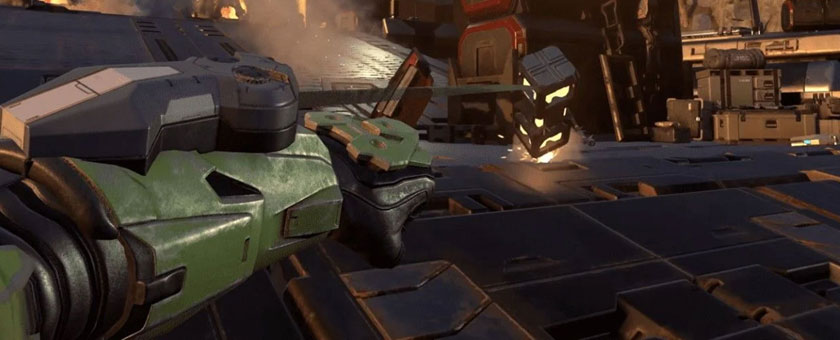
I did not get the chance to finish Halo Infinite. I had planned to do so on stream just before the calendar rolled over into 2022, but I had experienced a dreaded save corruption bug whilst trying to troubleshoot an odd issue with the controls. Nevertheless, Infinite is the first Halo game developed by 343 Industries that feels somewhat how a Halo game ought to feel.
Somewhat, but not quite there yet. My over-reliance on select human weapons over Covenant weapons is indicative of their lack of versatility and nerfed power levels compared to the earlier Bungie games. It seems to be an ever cascading problem with the series, making the alien weaponry more and more pitiful despite expanding the arsenal. Even so, the player still has multiple tools at their disposal for resourceful and clever combat decisions. Most notable is the grappling hook, allowing the player to not only traverse to great heights and at great speeds, but to also snatch explosive canisters with which to obliterate or weaken enemy forces. It also makes for a good finisher once you’ve shot an Elite’s shields away, or pop the helmet free of a Brute’s cranium: latch on with the grapple and lunge directly into their face with a high speed jab to the jaw.
Such combat shines the best in the open world, tackling the myriad enemy facilities and capturing field locations from which your human companions may spawn. Many have already spoken of it in great detail, but it is clear that 343 referenced the titular level map Halo from Combat Evolved when exploring the concept of an open-world game in this setting. It is imperfect, given its lack of differing climates or regions to traverse; it is all grass and pine trees, each zone cordoned off by sheer cliff faces in order to limit the draw distance for weaker Xbox One hardware. The open world becomes somewhat more pointless when attempting to ride a vehicle, limited to which paths and roads you can traverse due to the rocky terrain.
Regardless, being able to approach a variety of enemy bases or encampments however you wish is how Infinite latches onto that often misquoted thirty-seconds of fun that Jaime Griesemer claimed was the franchise strength. Yes, the core combat mechanics work well, but being able to approach one enemy encampment from sniping distance, or to storm in with a Warthog loaded with marine compatriots, or even casually rolling up in a Scorpion Tank are the variety that helps keep that thirty-second loop working. There are so many different ways to approach a single combat scenario, and even if you die it is likely that no two attempts will play exactly alike. At its core, Halo Infinite is off to a pretty good start.
The actual narrative campaign, however, is where things start to collapse. The writers try to replace Cortana with a quirky, almost childlike A.I. whose over-humanization reminds me of Call of Duty: Infinite Warfare’s Ethan. While Cortana as an A.I. with a personality was fine, she also did not feel like an over exaggeration of silly traits or comments, none of which make sense when so much of her initial dialogue is rigidly locked into the purpose of a program. The relationship of a human and an A.I. whose focus is driven by pragmatic protocols was handled far better in Titanfall 2, where BT’s monotone voice and logic-driven perspective are what allowed the occasional human quirk to shine through without the need to call attention to itself. The villains are dull, prone to monologuing, and in sore need of a cheeky Dante or Bayonetta character to lighten the self-serious tone. None of the villains are memorable or compelling, which I suppose is fitting given that the series hero is very much the same. Either Microsoft or 343 are so obsessed with making a character of the Master Chief rather than leave him as a quiet cipher for the player. It would be better to consider what more could be done with a universe whose greatest alien alliance has been shattered by the lies of the religion they were built upon. Instead, far more compelling characters like the Arbiter remain on the sideline, bored, never to be heard from again.
Halo Infinite is the best game that 343 Industries has made, but the fact that it took so many years to get it close to the franchise’s formal majesty is evidence enough that you can’t just manufacture games like a grocery product and expect them to succeed.
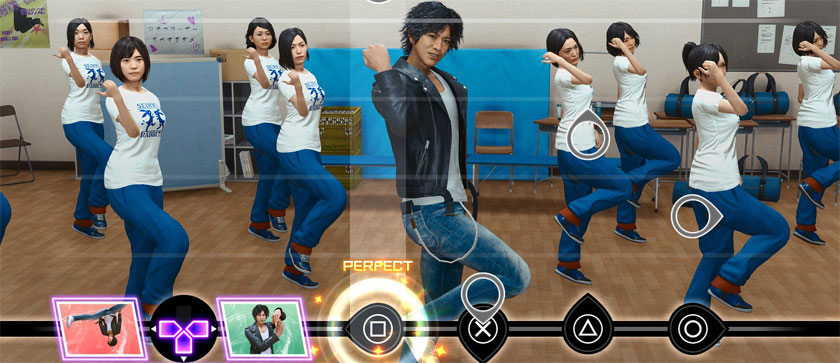
Perhaps this same criticism can be leveled at Ryu Ga Gotoku Studio, famous for the Yakuza franchise and 2021’s spin-off title Lost Judgment. They’ve effectively been working on a single franchise for their entire existence, yet the quality never seems to stop. I was fully prepared for Lost Judgment to be one of my favorite experiences of the year, especially being the sequel to Judgment – a spin-off whose narrative I preferred over any of the Yakuza titles I had played before.
In terms of mechanics, this is likely to be the best of the traditional brawler style I’ve played. Whereas the first title was plagued by a clan of goons constantly on the lookout for protagonist Takayuki Yagami, halting any momentum in the narrative or side quests for the sake of random street fights with quasi-bosses, the sequel grants the player a skateboard with which all encounters with thugs and criminals can be avoided. This allows the player to spend more time exploring and navigating the world without having to dodge, hide, or steer themselves away from potential scraps. Just hop on your skateboard and any would-be muggers ignore the detective’s presence. The loss of potential experience and money earned is balanced out by increasing their reward for completing quests, gained by taking side cases far more fitting for an urban detective like Yagami.
What is new for the entire Yakuza franchise as a whole is the inclusion of a high school, home of an eager young detective club that seeks out Yagami for support and advice for solving potential mysteries throughout the student body. These extended side stories are where the most impressive amount of content is located, as a variety of brand new mini-games have been developed exclusively for such smaller-scale narratives. From bicycle races to a boxing club, a complete rhythm game and a robotics tournament, there’s a surprising number of custom side activities framed by a mystery surrounding each student organization or individual’s plight. This is where Lost Judgment is perhaps at its strongest, because the drama of these high schoolers is handled with the same self-aware and humorous flair without sacrificing on the potential emotional investment towards the characters they surround. It may never achieve the same touching highs as a traditional Yakuza narrative can achieve, but each journey through a subculture leaves you with an ever-growing cast of likable teens and misfits.
Which is why it’s a shame that the main narrative collapses halfway through. For several hours the story is a gradual build up of themes regarding abuse of power, highlighting the manner in which society itself will protect the predators even as the prey are visibly tortured or killed. Yet when Yagami is confronted by the antagonist’s darker, self-interested take on justice, the end result is to simply shout the same counter-argument over and over, occasionally punctuated by fists. Hours of the game are devoted to hearing the same talking points by the same two characters, neither budging from their position nor shifting their perspective. It’s not a very surprising narrative turn if you’re familiar with Japanese media, as so many conflicts ultimately become an unstoppable force and immovable obstacle clashing into one another. The problem is that the Yakuza franchise typically offers far more interesting challenges for our protagonist’s values, and especially did so in the prior title Judgment. Yagami was forced to confront what it means to seek the truth and reconcile his former role as a lawyer with his current role as a detective. There is no such challenge to his values or identity in Lost Judgment, and so hours are spent with little progress being made from a character perspective while dialogue feels incessantly repeated. If the first half of Lost Judgment was my favorite Yakuza game, then the latter half was enough to drag it down into being the least.
Typically a game’s mechanics can be enough to elevate that title for me even in the wake of a satisfying narrative, but with so many Yakuza titles playing similarly and always with a healthy dose of jank, it is on their individual stories that these games rely. I can only hope that this is a rare black sheep in the Yakuza family; that, and a greater hope that they explore a less adult, more light-hearted spin-off of the high school mystery club in a future release. I’d love a game devoted to just that idea.
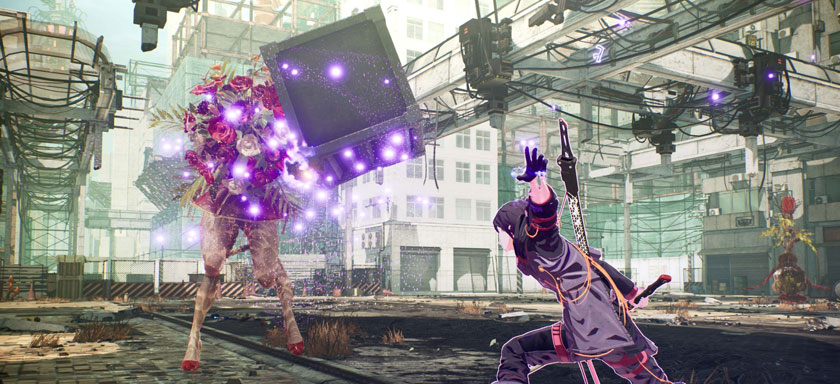
Scarlet Nexus was perhaps a greater surprise than expected, albeit precisely the sort of experience I had anticipated. It never looked great to me, so when it hit Game Pass far earlier than I thought it might, I was quick to give it a try. To my surprise, it was a decently paced action-RPG whose party-reliant concepts really came into fruition towards the end.
With a theme based on the connections between us, the combat mechanics are primarily based on how you implement the abilities of your comrades in arms. Some foes possess elemental weaknesses while others can only be struck using clairvoyance or high-speed acceleration. The player must thus make use of these different abilities in order to best survive and conquer their monstrous foes. In time they’ll also be able to summon their allies for a swift attack, and each follow-up summon will drive the opponent closer and closer to being stunned: a status upon which an immediate execution can be performed. All of these abilities are unlocked and strengthened through “bond” episodes between each chapter, developing the protagonist’s relationship with that character further.
By the end of the game, the player is constantly swapping abilities out, summoning comrades, and even being saved from taking damage as friends drop in to temporarily act as a shield. It takes a while to get to such excitement, however, as the early chapters will primarily rely on the player’s telekinesis to throw objects about, chaining physical and telekinetic attacks together or using the environment to unleash devastating damage. The early hours rely heavily on the narrative to drive the player’s interest, as there’s not much to chew on when you first start out. It’s alright, but otherwise feels little different than any other lower budget action-RPG.
The story is precisely what wrapped me up in the game’s world, however. I was not fond of the color palette or aesthetic, nor did the characters come across all that deep or interesting to me, but the often surprising and sometimes bizarre twists and turns it would take kept me curious just how crazy the narrative would become. It was almost a game in itself to guess which out-there twist would come next. Perhaps most surprisingly, it felt as if it all came together tidily by the game’s conclusion.
I wish I could say Scarlet Nexus was a new favorite of mine, but it was always missing some special ingredient to truly earn my unrequited love. Perhaps if there were more time spent with the characters, or they simply focused less on certain traits and more on those that developed the setting more (such as the clairvoyant’s vision starting to go bad). Nonetheless, I would have skipped Scarlet Nexus were it not for Game Pass, and I’m glad to have had the chance to play it.
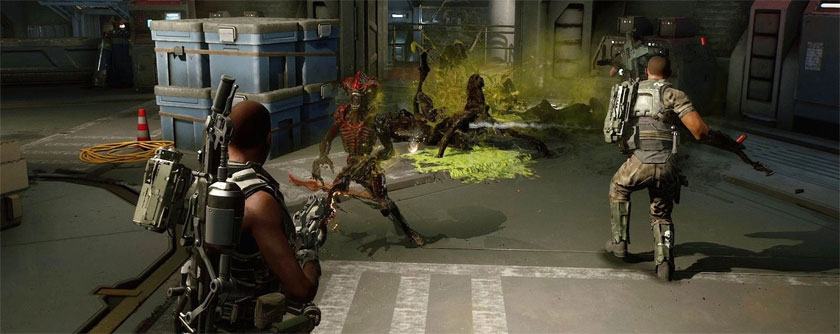
Aliens: Fireteam Elite is precisely the sort of lower-budget title that I fall unabashedly in love with, and yet no one else seems to enjoy it quite as much as I do. This may seem disingenuous to say given I had streamed the game with two of my friends, each of which had a good time. For my part, however, it would have become the next weekly game to dive into with my friends on the regular. It would have been the next best thing to a proper Left 4 Dead sequel, especially after I had felt burned by the Back 4 Blood Beta.
It’s hard to really pinpoint what makes it work so well for me, but I’ve narrowed it down to a few factors. The first is the time-to-kill of the Xenomorph hordes themselves. Each individual alien takes very little time to annihilate, but the constant outpouring of wall-crawling murder machines keeps the pressure on. This is especially true when the player hears the cry of a more powerful Soldier or Crasher type beast, knowing they’ll need to somehow manage both the swarm of smaller drones and these larger monstrosities simultaneously. This would be where special abilities and perishable gear comes into play, adding tactical considerations as to when to use certain skills, when to hold on for a better opportunity, or whether you should use a limited item for a temporary advantage.
The end result is an arcade-style action game that latches onto the previously mentioned thirty-seconds of fun; it’s not in killing the aliens that the fun is derived, it’s in the quick decision making that is necessary as each horde floods the facility. It’s not about when this wave of Xenomorphs will end so much as wondering where the next will appear, or what to do should a Spitter, Burster, Charger, or Soldier emerge. That the campaign also features later varieties of foes contributes to a varied gameplay experience, preventing the Xenomorphs from becoming too tedious and repetitive an opponent. Of course, the real draw is the bug hunt, and so these different enemy types offer a nice reprieve but certainly do not overstay their welcome. Just as you want to get back to regular Xenomorphs, they start crawling back out of the walls, and this time accompanied by face huggers as yet another new threat.
As someone that loves the original trilogy of films but lamented the continued mutilation of franchise lore, atmosphere, and scope, and become similarly wary of what any game adaptation might do at this stage, I was pleasantly surprised by all that Aliens: Fireteam Elite had accomplished. It makes for a satisfying Aliens game while simultaneously giving me the Left 4 Dead successor I’d been wanting for a long time. If you can get yourself a regular fireteam of three to take it on, then I highly recommend it.
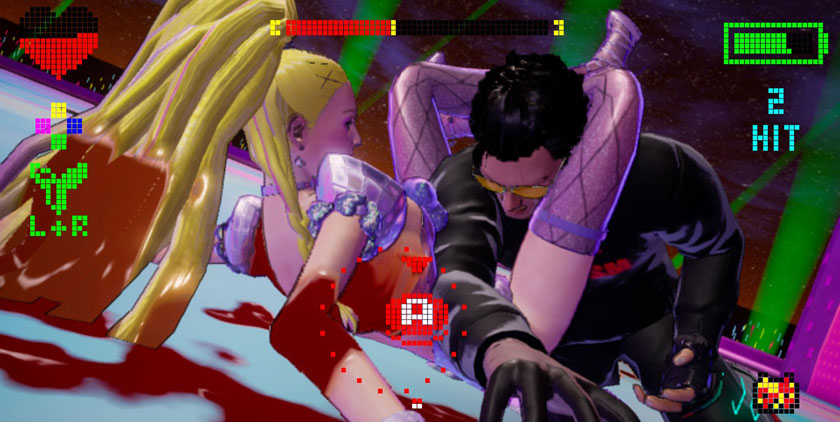
I was worried about No More Heroes 3 leading up to its release. One need only look to my write-up on the entire trilogy to understand why, as revisiting the first and second game revealed a drastically different tone between the two. Travis Strikes Again was perhaps the first source of concern, as I found the title to be incredibly self-indulgent to the point of nonsense on a narrative level and extremely tedious and exhausting from a gameplay perspective.
Fortunately, No More Heroes 3 is truly the ideal sequel to the original Nintendo Wii title that launched so many years ago, all the way back when I was in College. Suda51 is still writing self-indulgent nonsense, but it feels more purpose driven this time. Our psychotic extraterrestrial antagonist is revealed to have a caring heart for his comrades on the inside rather than being a two-dimensional overlord willing to kill his own henchmen for talking back. It is a narrative that seeks to live up to the franchise moniker, reveling in the fact that there truly are no more heroes… at least, depending on whose perspective you’re looking at. For every hero is a villain in the eyes of another, and this source of conflict is what drives the characters into this Tarantino-if-he-was-a-Weeb bloodbath of aliens, mecha, and kaiju-sized alligators.
The real strength of the game is in amputating the weakest elements of its prior entries and polishing up its strengths. The original No More Heroes featured lengthy levels of janky fights against very samey opponents, so No More Heroes 3 abandons the corridors of repetitive combat in favor of singular combat arenas with varied classes of enemies, each equipped with unique weapons and move-sets. Travis Touchdown himself now possesses additional abilities to help slow down, heavily damage, or clear out the foes before him. With smoother melee controls and responsive wrestling finishers, No More Heroes 3 may not live up to the polish and mechanical mastery of the Devil May Cry series, but it manages to feel good nonetheless. We’re no longer at the point where we have to forgive jank like we did on the Wii.
No More Heroes 3 is, most of all, that rare sort of title that just reminds you why video games are so loveable in the first place. There are few mediums that can explore as many crazy concepts in a single work while maintaining an odd sense of coherence. The game is stylish in every sense of the word, and the world is a better place now that Suda51 had his chance to deliver this long awaited sequel.
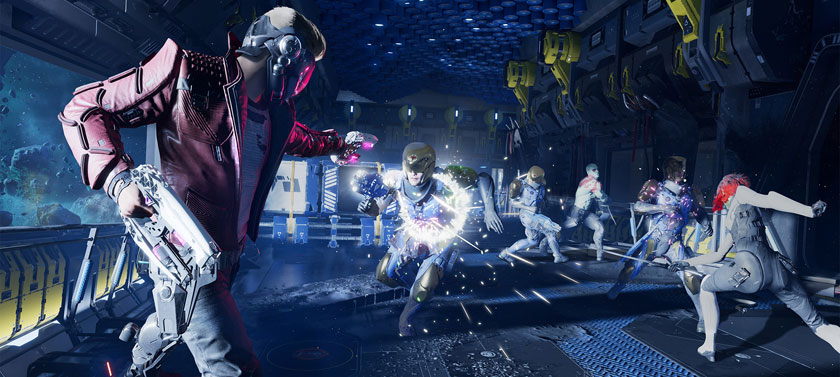
Which leaves me with Marvel’s Guardians of the Galaxy, a game I hope to give its own essay in time. This was, perhaps, the greatest surprise of the year for me. I hold very little interest in most Western AAA level productions these days, and was particularly uninterested in another assemblage of stunt doubles from the Marvel Cinematic Universe. Nonetheless, I kept up with the marketing – something I tend to do for certain notable games even if I’m not interested in them – and found it to look more appealing as more was revealed. After it was released and received an outpouring of positive praise, I had to find out for myself.
The end result was an ideal representation of what a single-player AAA game ought to be. Much praise has been made of the lack of microtransactions and loot boxes, but I think it is more important to note a complete lack of trend-chasing altogether. There may be a number of inspirations within Guardians of the Galaxy, from Telltale style adventure to BioWare-esque population centers or crew chatter, or even the evidence of developer Eidos Montreal’s experience crafting Shadow of the Tomb Raider’s platforming and environmental hazards, but all of these inclusions feel seamlessly knitted together to form a cohesive vision and experience. What stands out to me the most is also what I’ve seen many label as the weakest part of the package: the combat.
It seemed an odd choice to put the player in control of Peter Quill exclusively, but it actually unifies the game’s thematic and mechanical goals together. The story isn’t just about the team learning to work as a single, cooperative unit, it’s also about Peter’s ability to lead. This is what makes the combat work so excellently, and just as Peter needs to best learn how and when to use his teammates’ abilities, so too must the player figure out when to rely on their comrades rather than their own strength. The end result is a game that looks like a third-person shooter on the surface, but is far closer to an action-RPG focused on elemental weaknesses, knowing which team abilities to use in tandem with one another, and figuring out when and how to position yourself for your own special attacks.
As I said, I’d love to dedicate a whole write-up to the game, but another playthrough may be required to give it the proper treatment. Not that it would be torture to do that very thing: though it may lack the incentive to go through multiple times that Resident Evil Village possesses, Guardians of the Galaxy is one of those games where just thinking about it makes you want to give it another go.
Appropriate, as the movies used to give me that very same feeling.
With that said, we now come near to the end of our year in review. Next week I will conclude with my favorite game released in 2021. I’m sure it’s easy to guess, especially if you’ve been listening to the podcast or are familiar with my history of games. Regardless, I hope that, if any of the games I discussed sounded interesting, you take the time to give them a look yourself. They all come recommended, even if they were somehow or somewhat a bit disappointing for me. Despite any lows, they were still some of the best gaming hours I spent in 2021.


